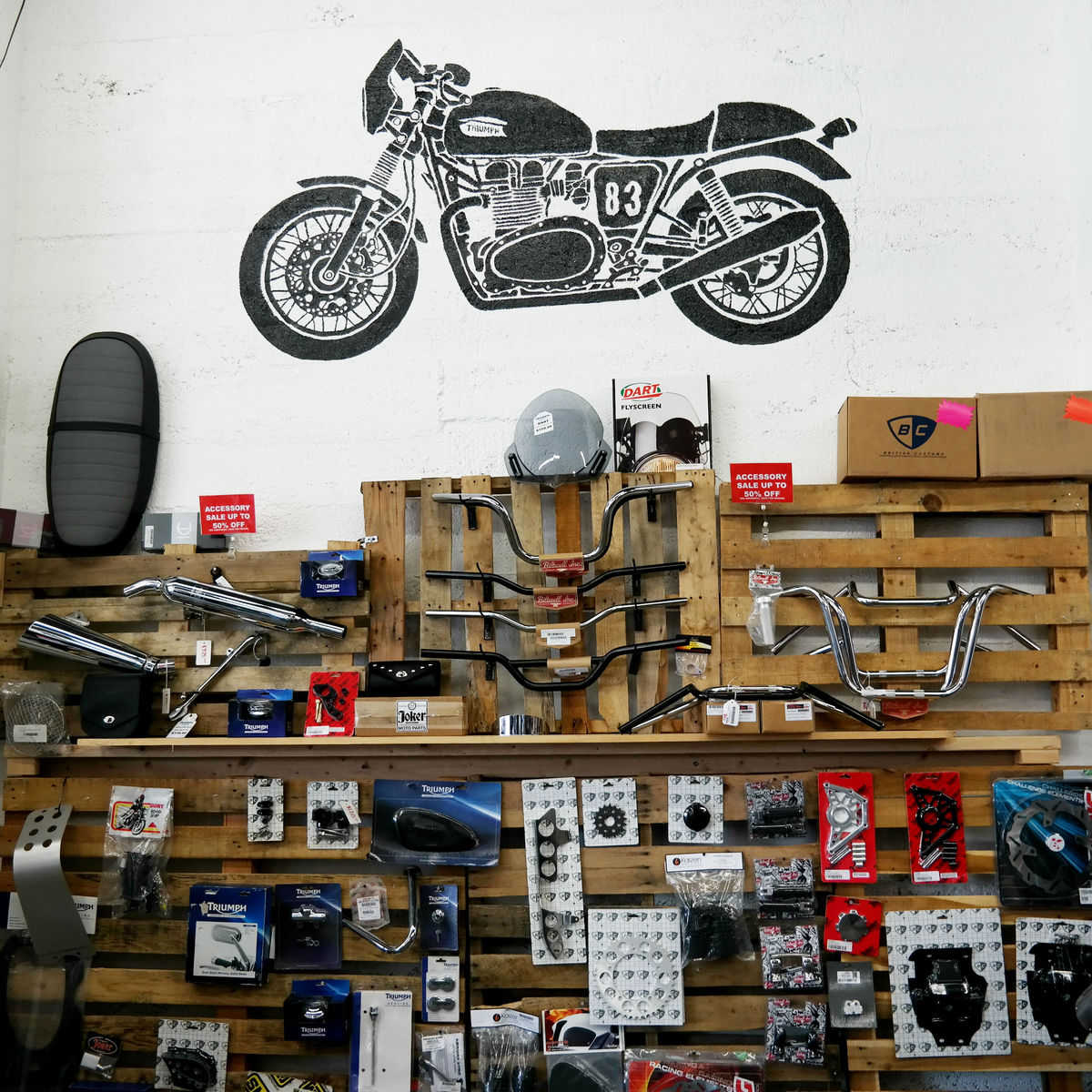See Our Motorcycle Shop for Professional Advice and Top Quality Products
Grasping Motorcycle Gears: Exactly How to Optimize Your Riding Experience
In the world of motorcycling, grasping the art of gear adjustment is crucial for boosting your riding efficiency. Correctly comprehending and making use of bike gears can considerably impact velocity, control, and gas effectiveness, changing a typical trip into a seamless, exhilarating trip.
Comprehending Equipment Mechanics
At the core of motorbike characteristics, gear auto mechanics play a crucial role in transforming engine power into activity, ultimately dictating speed and control. The gear proportions, thoroughly developed, determine the connection in between engine changes and wheel turns, impacting velocity and fuel performance.
Comprehending gear auto mechanics starts with identifying the significance of the gearbox, which houses numerous equipments of varying dimensions. These equipments connect via a process referred to as meshing, where teeth of various equipments engage to transmit power. The precision of this communication is crucial; any type of imbalance or damage can lead to ineffective power transfer, preventing performance. Additionally, the arrangement and size of gears affect the motorbike's capability to manage various lots and speeds.
Moreover, the principle of gear moving is integral to making best use of performance. Timely and smooth changes guarantee that the engine operates within its ideal power band, preventing unnecessary stress and enhancing longevity (moto parts nz). By understanding these mechanical intricacies, bikers can attain an unified mix of control, efficiency, and power, raising their riding experience
Timing Your Changes
Shift timing proficiency is vital for optimizing bike efficiency and enhancing the riding experience. Effectively timed changes make sure that the engine operates within its optimum power band, which is crucial for preserving control, accomplishing smooth velocity, and making certain the durability of the motorcycle. Bikers should create an intuitive sense of when to shift gears, which includes comprehending the relationship in between engine changes per minute (RPM) and rate.
To master shift timing, pay close focus to the engine's audio and feel, as these give essential hints about when to change equipments. When the engine approaches the top array of its power band without reaching the redline, the optimal change factor typically happens - motorcycle parts nz. Moving prematurely can result in a lack of power, while shifting also late might cause unnecessary engine stress
Furthermore, roadway problems and riding design influence shift timing. In comparison, throughout freeway riding, fewer changes at higher speeds can be extra ideal.
Enhancing Gas Efficiency
While mastering motorcycle gears is vital for efficiency, enhancing fuel efficiency is just as essential for both ecological and economic reasons. Optimum fuel consumption not only reduces functional prices yet also decreases the environmental impact of riding. To attain this, one should understand the detailed connection between equipment option and engine efficiency.
Firstly, picking the right gear at appropriate rates can significantly affect gas consumption. Riding in a greater gear at lower speeds can bring about engine carrying, which is his explanation detrimental to both fuel economic situation and engine health. Conversely, riding in lower gears at high rates causes unneeded fuel consumption. Hence, preserving an ideal equilibrium by changing equipments in alignment with road problems and prepared for maneuvers is vital.
In addition, normal upkeep plays a pivotal duty in gas effectiveness. Ensuring that the bike is well-tuned, with clean air filters and effectively pumped up tires, can lower and enhance the rules of aerodynamics fuel wastefulness. In addition, embracing a riding design that welcomes progressive velocity and smooth deceleration can add to better fuel economic situation.

Methods for Smooth Transitions
Achieving smooth equipment transitions is basic to enhancing the riding experience and guaranteeing the durability of a bike's transmission system. Correct gear shifting not motorcycle gear bundle only adds to a seamless trip yet additionally decreases damage on the mechanical parts. To master the art of smooth transitions, riders have to concentrate on a couple of vital techniques.

Secondly, clutch control plays an essential duty. Engaging and disengaging the clutch smoothly requires practice. The clutch lever should be released progressively, enabling a seamless transfer of power from the engine to the wheels without creating a jolt or abrupt motion.

Adjusting to Road Conditions
Browsing varied roadway conditions is a vital skill you can try this out for any type of motorcyclist aiming to preserve control and security. Whether you're riding on wet surface areas, gravel roads, or browsing sharp turns, your capacity to adjust your equipment usage and riding strategy is vital. Comprehending exactly how to readjust your equipments suitably can substantially affect grip and security, ensuring a more secure trip.
On damp roads, it is recommended to keep greater gears to lower torque and lessen wheel spin. This method assists keep grip on unsafe surfaces, permitting smoother acceleration and slowdown. On the other hand, when riding on gravel or unequal surface, lower equipments are more effective. Reduced equipments give much better control and allow you to respond even more quickly to unexpected modifications in the road surface area.
Sharp contours demand precise gear administration to balance speed and control. Downshifting before entering a curve can help maintain energy while making certain the motorcycle remains secure throughout the turn. Regular practice in different conditions boosts your ability to respond and forecast to changes in road appearance and slope.
Final Thought
Mastering motorbike gears substantially improves the riding experience by improving acceleration, control, and gas performance. An extensive understanding of equipment auto mechanics and precise shift timing ensures the engine operates within its optimal power band, while smooth shifts through reliable clutch and throttle coordination boost convenience and efficiency. Adapting gear selection to different roadway problems, such as utilizing greater gears on damp surfaces and lower gears on crushed rock, more improves handling and security. Ultimately, these abilities boost the general trip.
Understanding equipment technicians starts with acknowledging the value of the transmission, which houses numerous gears of varying sizes. These equipments engage via a process recognized as meshing, where teeth of different equipments involve to transfer power (motox parts nz). Gentle adjustments to the throttle throughout gear changes can avoid jerky movements and preserve a constant riding pace
Whether you're riding on damp surfaces, crushed rock roads, or navigating sharp turns, your ability to adapt your gear usage and riding technique is extremely important. Adapting equipment choice to numerous road problems, such as using higher gears on wet surfaces and lower gears on gravel, additional boosts handling and safety.